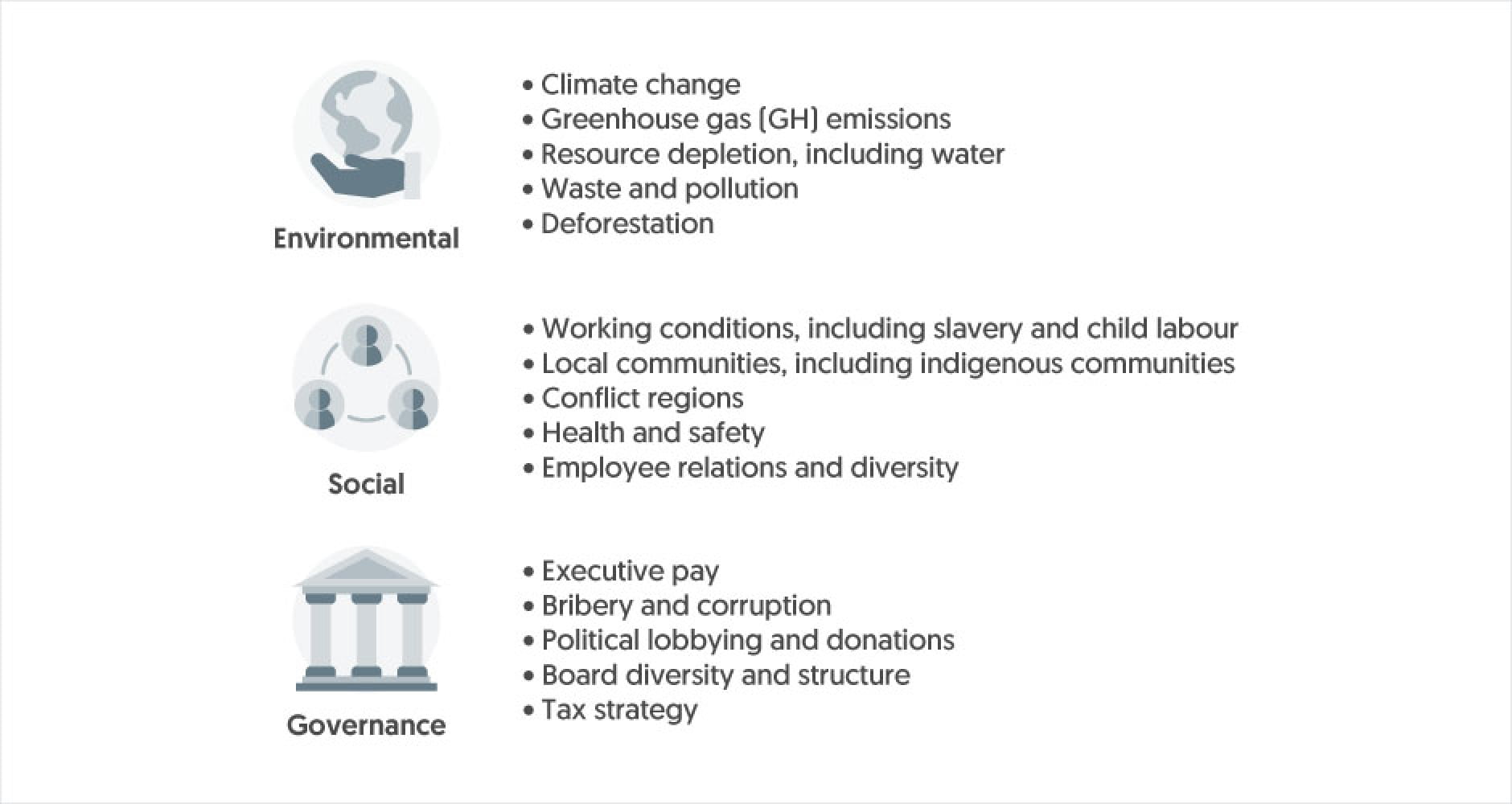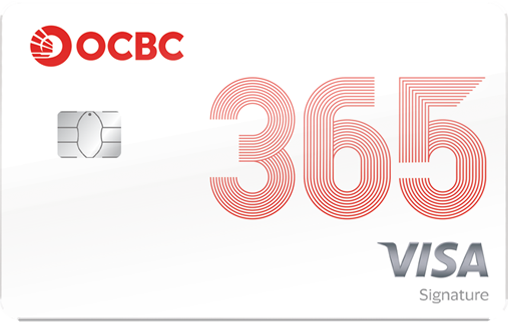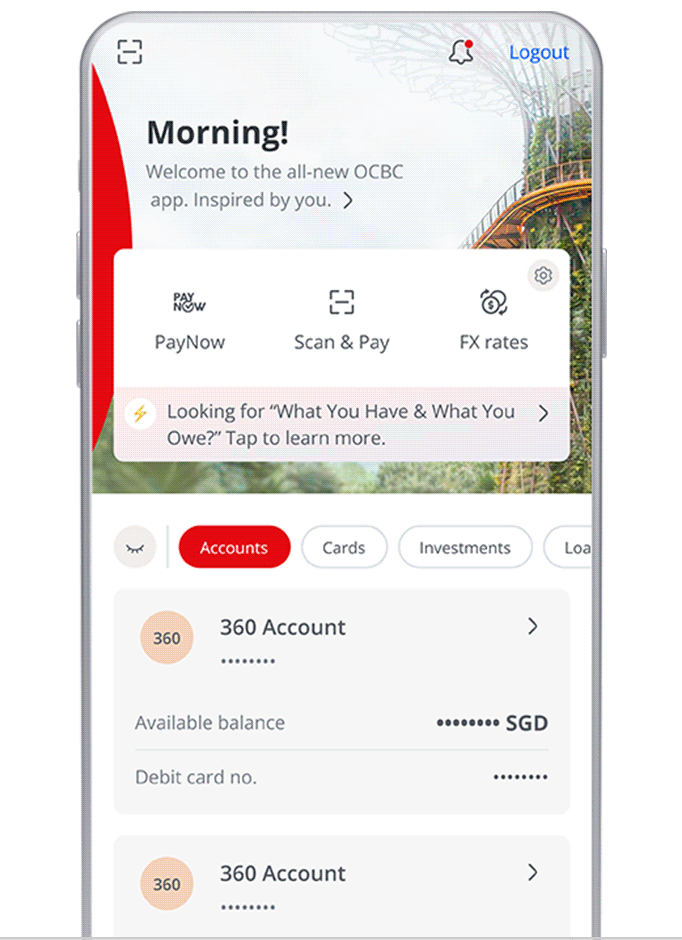A beginner's guide to sustainable investing
A beginner's guide to sustainable investing
When it comes to investing, does the phrase “Greed is good” resonate with you? If we’re being honest, greed does have a part to play in what drives us to beat inflation and grow our wealth. But we’re also here to tell you that being greedy and being green aren’t mutually exclusive! That’s the beauty of sustainable investing. It’s the intersection of earning a profit while continuing to do good for our environment. To bust a common misconception, going green does not mean you are getting the shorter end of the stick. In fact, you might be getting more.
What is sustainable investing and how does it work?
Sustainable investing (also known as impact investing) refers to investments that, in addition to financial factors, consider environmental, social and governance (ESG) factors in the investment decision-making process. These ESG factors can cover an extremely broad range of issues – from avoiding investing in tobacco companies to financing clean water and energy initiatives.

Source: Fidelity International, PRI, 2018. For illustration purposes only.
Common terms associated with sustainability
Sustainability has been a buzzword for a while now, and more investors have been shifting to align their investment portfolios with internationally recognised sustainability goals such as the Paris Agreement and the UN’s Sustainable Development Goals (SDG). You probably would have heard these words floating around in the media, but what exactly do they mean?
- Climate change: This refers to long-term shifts in temperatures and weather patterns. Human activities have been the main driver of climate change, primarily due to the burning of fossil fuels like coal, oil and gas. Consequences of climate change include intense droughts, water scarcity, severe fires, rising sea levels and declining biodiversity.
- Conference of the Parties (COP): This is the decision-making body responsible for monitoring and reviewing the implementation of the United Nations Framework Convention on Climate Change. Since March 1995, the COP meets annually where countries gather to submit their plans for climate action. Last year’s conference was the 26th session of the COP (COP26) and it was held in Glasgow, Scotland.
- The Paris Agreement: This refers to a legally binding international treaty adopted by 196 parties at COP21 in Paris on 12 December 2015 to combat climate change. For the first time ever, countries were unanimous in their decision to work together to limit global warming to a bold target of 1.5°C. The Paris Agreement works on a 5-year cycle of increasingly ambitious climate action carried out by the countries.
- Global Objective & Key Result (OKR): The world’s OKR is to secure global net-zero carbon emissions by 2050 and to limit global warming to 1.5°C by 2100. Why 1.5°C? Well, at 1.5°C, there’s a good chance we can prevent most of the ice sheets from collapsing. If we were to cross over to 2°C, these ice sheets could collapse which would cause sea levels to rise to 10 meters (30 feet). To put things into perspective, 1/3 of Singapore’s land is less than 5 meters above sea level! That’s not even the worst-case scenario. At 3°C, many regions would suffer from “unlivable heat”, meaning an enormous depletion in biodiversity and a drastic drop in food security. Not to mention, most urban infrastructures don’t have the capacity to cope with such extreme weather conditions.
- Sustainable Development Goals (SDGs): In 2015, the United Nations set out a collection of 17 interlinked global goals designed to be the "blueprint to achieve a better and more sustainable future for all". All countries – developed or emerging – are jointly guided by these 17 global SDGs, which at the core, aim to end poverty, protect the planet, promote good well-being, as well as bring peace and prosperity to all. Companies can choose to adopt a few SDGs as their core focus to guide their business and sustainability strategies.
- Greenwashing: Greenwashing refers to the cynical practice of applying a sustainable “label” to a fund, while disregarding the core ideas of sustainable investing. Unfortunately, the lack of standardisation of what constitutes a sustainable investment opens the door to greenwashing. It is not uncommon to see many companies and businesses slap on a “sustainable” or “green” label to attract investor money. To improve credibility and counteract greenwashing, companies can adopt ESG ratings by professional investment research and rating agencies such as Morningstar and Morgan Stanley Capital International (MSCI). New regulations, such as the Sustainable Finance Disclosure Regulation (SFDR), have also come into play.
- SFDR Article 6, 8 and 9: Under the new SFDR that came into effect in 2021, asset managers are required to classify their funds as either an article 6, 8 or 9 fund, depending on their level of sustainability. Article 6 covers funds without a sustainable scope in their investment process (i.e. funds that invest in tobacco companies or thermal coal producers). Article 8 covers funds that promote environmental or social characteristics and have good governance practices. Article 9 covers funds that make a positive impact on society and/or the environment through sustainable investment and have a non-financial objective at the core of their offering.
Examples of sustainable investments
Sustainable investments have evolved greatly – and rapidly – in recent years as countries come together to collectively protect our planet. Common examples of sustainable investments include green loans (car/housing), green bonds, green funds and carbon credits.
Do good and earn more
Given the increased global focus on combating climate change, the business activities and green efforts of many companies are now under tighter scrutiny. Brands that fail to act responsibly for the planet are boycotted and become a lesson learnt by other firms, pushing businesses towards a path of building a “greener future”. Notwithstanding the positive publicity, it’s been largely observed that companies who “do good” tend to profit financially as well. History has demonstrated that these benefits are cascaded down to investors. While past performance does not guarantee future results, sustainable funds have outperformed in the pandemic-driven sell-off of 2020. The evidence also indicates that this trend of outperformance has persisted over the longer term.
Why invest in sustainable funds
Here are 3 reasons why sustainable investments can and should be incorporated into your investment portfolio:
- Driving greater change: The biggest pro for investing in sustainable funds is simply to encourage the shift towards more sustainable business practices. Sustainable investing provides a way for investors and consumers to actively show the kind of businesses they’d like to support. Powerful – and necessary – change for the greater good.
- Capital appreciation: Accelerated by the pandemic and a period of outperformance, the number of sustainable funds and their asset sizes are poised to grow even further. As previously mentioned, historical returns are not indicative of future growth, but they do tell a story. Investors can look forward to capital growth and potentially earning a neat profit with sustainable investments.
- Risk management: Sustainable investing can be seen as an evolution of traditional investment principles of maximising shareholder value and minimising risks. How so? For example, investing in a company with low ESG standards may expose the portfolio to a variety of risks faced by said company, such as worker strikes, litigation and negative publicity. This, in turn, might result in lower future returns. In other words, monitoring the ESG credentials of an investment can lead to better risk-based judgements.
Sustainable fund ideas
You can easily access the Sustainability Hub via your OCBC Digital app.
Important notices
Grow your wealth with OCBC today
General disclaimer
This advertisement has not been reviewed by the Monetary Authority of Singapore.
- Any opinions or views of third parties expressed in this document are those of the third parties identified, and do not represent views of Oversea-Chinese Banking Corporation Limited (“OCBC Bank”, “us”, “we” or “our”).
- This information is intended for general circulation and / or discussion purposes only. It does not consider the specific investment objectives, financial situation or needs of any particular person.
- Before you make an investment, please seek advice from your Relationship Manager regarding the suitability of any investment product taking into account your specific investment objectives, financial situation or particular needs.
- If you choose not to do so, you should consider if the investment product is suitable for you, and conduct your own assessments and due diligence on the investment product.
- We are not making an offer, solicit to buy or sell or subscribe for any security or financial instrument, enter into any transaction or participate in any trading or investment strategy with you through this document. Nothing in this document shall be deemed as an offer or solicitation to buy or sell or subscribe for any security or financial instrument or to enter into any transaction or to participate in any particular trading or investment strategy.
- No representation or warranty whatsoever in respect of any information provided herein is given by OCBC Bank and it should not be relied upon as such. OCBC Bank does not undertake an obligation to update the information or to correct any inaccuracy that may become apparent at a later time. All information presented is subject to change without notice.
- OCBC Bank shall not be responsible or liable for any loss or damage whatsoever arising directly or indirectly howsoever in connection with or as a result of any person acting on any information provided herein.
- Investments are subject to investment risks, including the possible loss of the principal amount invested. The information provided herein may contain projections or other forward-looking statements regarding future events or future performance of countries, assets, markets or companies. Actual events or results may differ materially. Past performance figures, predictions or projections are not necessarily indicative of future or likely performance.
- Any reference to a company, financial product or asset class is used for illustrative purposes and does not represent our recommendation in any way.
- The information in and contents of this document may not be reproduced or disseminated in whole or in part without the Bank’s written consent.
- OCBC Bank, its related companies, and their respective directors and/or employees (collectively “Related Persons”) may, or might have in the future, interests in the investment products or the issuers mentioned herein. Such interests include effecting transactions in such investment products, and providing broking, investment banking and other financial services to such issuers. OCBC Bank and its Related Persons may also be related to, and receive fees from, providers of such investment products.
- You must read the Offer Document/Indicative Term Sheet/Product Highlight Sheet before deciding whether or not to purchase the investment product, copies of which may be obtained from your relationship manager.
- Any hyperlink to any third party article, or other website or webpage (including any websites or webpages owned, operated and maintained by third parties) is for informational purposes only and for your convenience only and is not an endorsement or verification of any such article, website or webpage by OCBC Bank and should only be accessed at your own risk. OCBC Bank does not review the contents of any such articles, website or webpage, and shall not be liable to any person for the same.
- There are links or hyperlinks which link you to websites of other third parties (the “Third Parties”). OCBC Bank hereby disclaims liability for any information, materials, products or services posted or offered on the website of the Third Parties.
Collective Investment Schemes
- A copy of the prospectus of each fund is available and may be obtained from the fund manager or any of its approved distributors. Potential investors should read the prospectus for details on the relevant fund before deciding whether to subscribe for, or purchase units in the fund.
- The value of the units in the funds and the income accruing to the units, if any, may fall or rise. Please refer to the prospectus of the relevant fund for the name of the fund manager and the investment objectives of the fund.
- Investment involves risks. Past performance figures do not reflect future performance.
- Any reference to a company, financial product or asset class is used for illustrative purposes and does not represent our recommendation in any way.
For funds that are listed on an approved exchange, investors cannot redeem their units of those funds with the manager, or may only redeem units with the manager under certain specified conditions. The listing of the units of those funds on any approved exchange does not guarantee a liquid market for the units.












